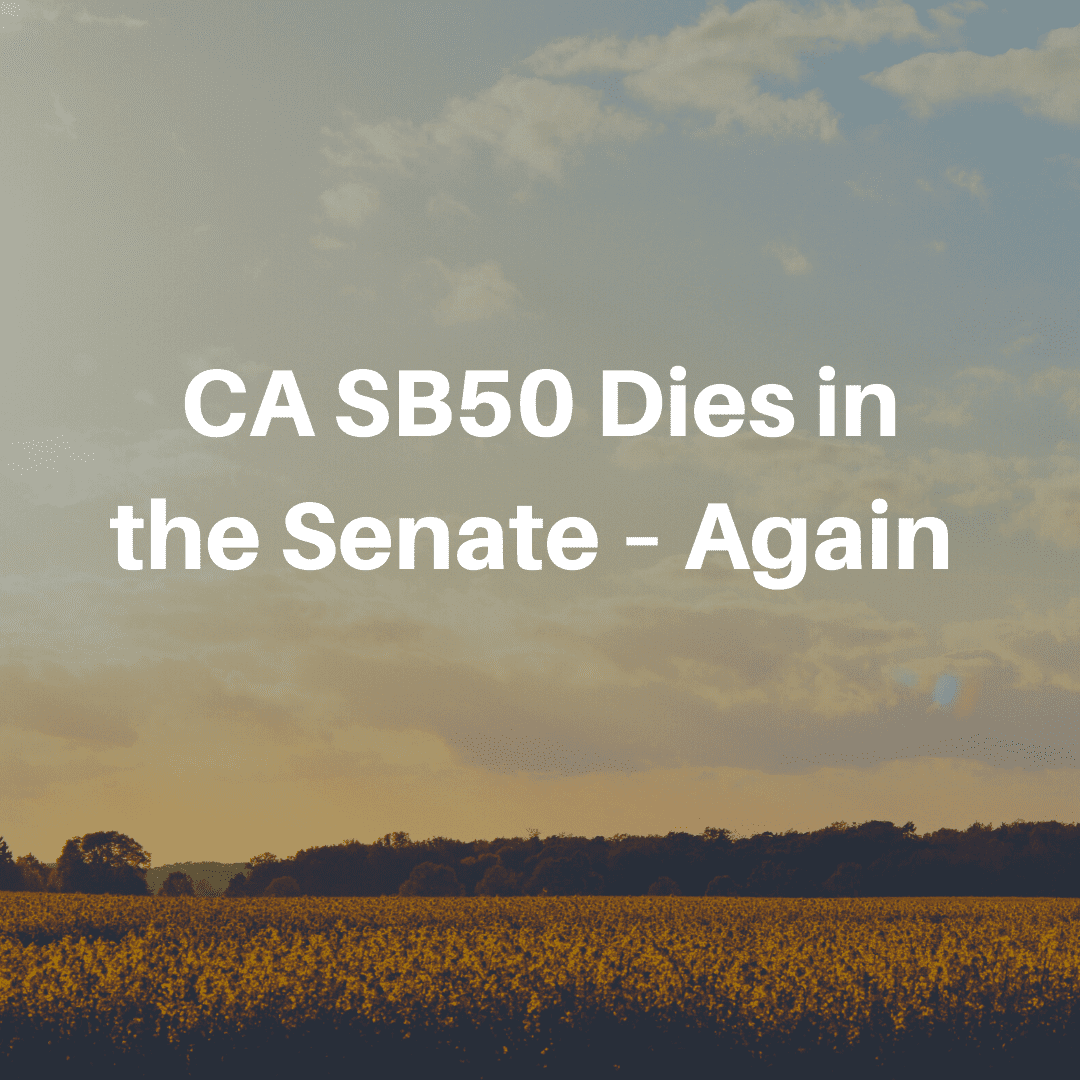
CA SB50 Dies in the Senate – Again
CA SB50 would apply to multifamily developments within a quarter-mile radius of a bus stop, and a half-mile radius of a rail stop.
California needs to build 3.5 million homes by 2025 to end housing shortage. California loses $140B annually due to the housing shortage; more than $90B in missing construction investment and more than $50B in missing consumption which has been crowded out by housing costs.
Upzoning (noun) – the practice of changing zoning in an area to allow for greater density and increased commercial use. (this is meant to be used as a sub head or stand-alone text box)
Despite opposition, the bill has passed through two committees in 2019, but was struck down at the Senate Appropriations Committee in mid-May 2019. This would have been the bill’s last hurdle before moving along to the Senate floor. At the heart of the debate is the premise of single-family zoning and expansion of density restrictions, which have historically been under the jurisdiction of local communities. Currently, 80 percent of California cities restrict building anything besides single-family homes, with few exceptions.
A similar bill, SB 4 is also making legislative progress. SB 4 differs in that it focuses on allowing for strategic infill for development of affordable workforce housing. To qualify, the property must be located in a city of 50,000 residents within a half mile of a rail line or ferry terminal. The city must also have produced fewer housing units than jobs and failed to have met all of its Regional Housing Needs Allocation goals.









